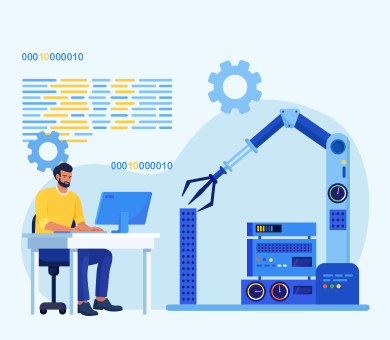Main Embedded Software Development Frameworks and Tools

[ad_1]
Embedded systems surround us in all spheres of our life. They encompass almost every household appliance and are an essential part of any industry.
Embedded systems make a combination of hardware and software that provides particular control functions within a larger system.
Embedded software development differs from traditional one as embedded systems face some particular challenges during their performance.
They should be stable, consistent, and ready to provide real-time responses to changes in the operating environment.
Fortunately, there are many frameworks and tools that simplify the work of developers and make embedded software more productive and responsive. This article outlines the best embedded software development IDEs, frameworks and tools.
What is Embedded Software?
An embedded system is an element integrated into hardware to control some of its functions. Also, it is an integral part of the Internet of Things (IoT).
Embedded systems are applied in such industries as telecommunications, electronics, automotive, medicine and others.
Embedded system software is a specific type of programming for non-computer devices. It can be of a different complexity, which depends on the embedded system’s purpose and sophistication.
Embedded software is always developed for a particular device that it will work on and has a fixed choice of operating features.
IDEs for Embedded Software Development
Integrated Development Environment makes embedded software development time-saving and cost-cutting since all the necessary development tools are collected into one place.

Here is a list of the most popular IDEs for embedded development:
Frameworks and Tools For Embedded Development
There are many frameworks and tools available for embedded development, some of the most popular ones include:
Qt Framework
Qt is a cross-platform framework that uses C++ for web, mobile, desktop, and embedded development. It is one of the most popular frameworks applicable to embedded apps with UI or without it. Qt is ahead in UX/UI for applications, offering easier ways to develop intuitive and user-centered interfaces.
Qt provides developers with a big choice of tools, such as rich libraries, intuitive APIs, and extensive support. In addition, Qt has its own IDE called Qt Creator, which runs on Android, Linux, Windows, OS X, and some other systems.
Qt’s embedded development platform, called Qt for Embedded Linux, is specifically designed for use in embedded systems. It includes a range of tools and libraries for building applications that run on a variety of embedded devices, including single-board computers, microcontrollers, and other specialized hardware.
Qt features:
Qt provides a powerful and flexible platform for developing embedded systems, particularly those that require sophisticated user interfaces and multimedia capabilities. Its wide range of features and support for multiple hardware platforms make it a popular choice for developers working on a range of embedded projects, from home automation to industrial automation to automotive applications.
Android Studio
Android Studio is the official integrated development environment (IDE). It provides developers with a vast assortment of advantages, such as transparent on-target deployment, on-target debugging, strong statistics analysis, and others.
Android Studio provides a range of features that can be useful in embedded development, such as:
While Android Studio is primarily designed for mobile development, it can be used for developing applications that run on a range of embedded devices that use the Android operating system, such as smart TVs, set-top boxes, and other IoT devices. However, developers may need to modify their applications to work on these devices, taking into account differences in hardware capabilities and user interfaces.
Conclusion
Embedded systems are an integral part of today’s life. They allow us to benefit from technological innovations not only in some specialized industries but in everyday routine.
However, embedded systems are much more difficult to work with. As a result, it is crucial to find the best frameworks and tools to make the process of embedded software development faster and easier.
To choose one that will best fit your project’s needs, it is necessary to focus on the type of device that this software is going to run on and the features that should be present on it.
With these factors in mind, selecting appropriate frameworks and tools will become more manageable, resulting in successful embedded software development.
[ad_2]
Source link
